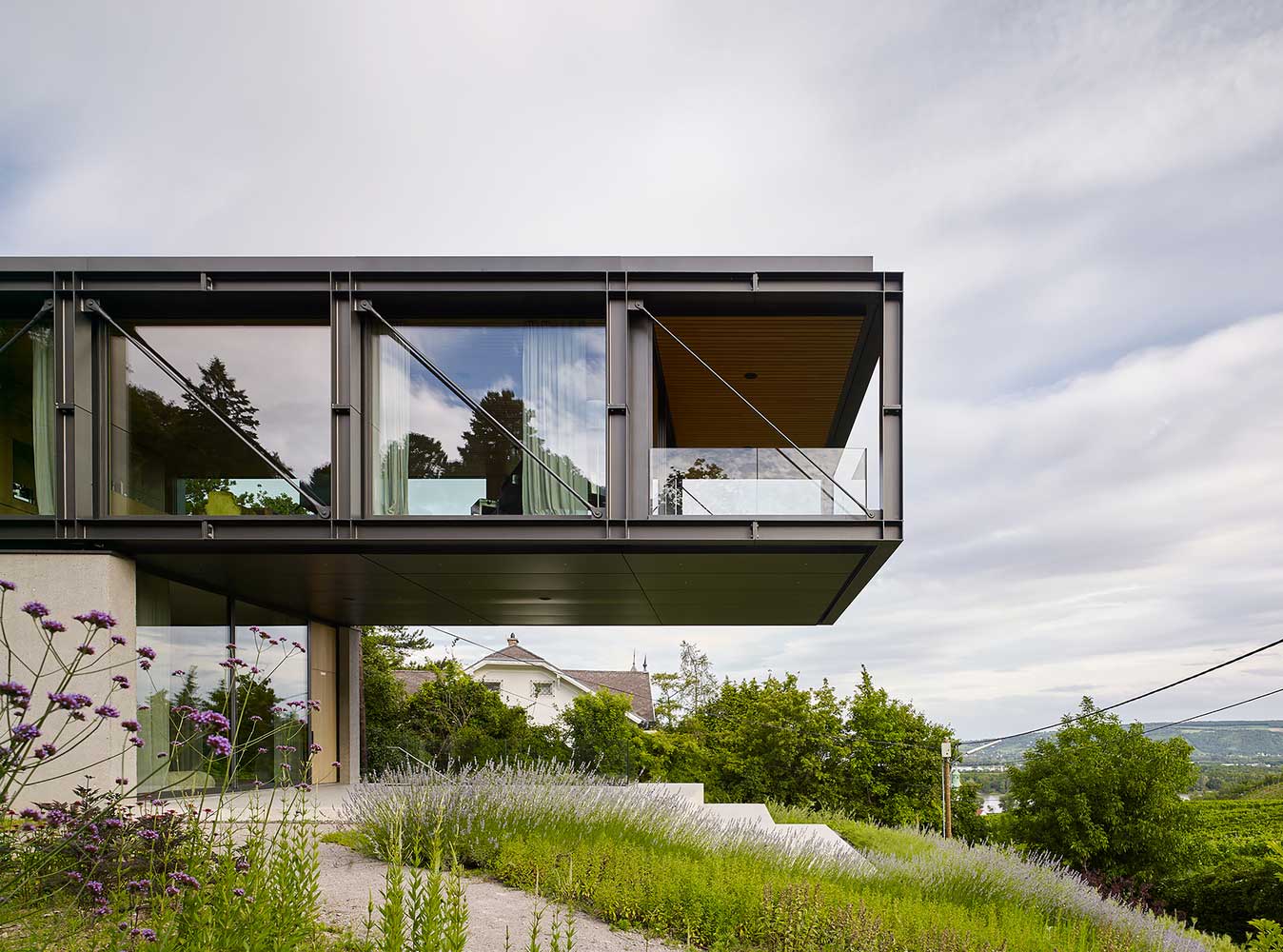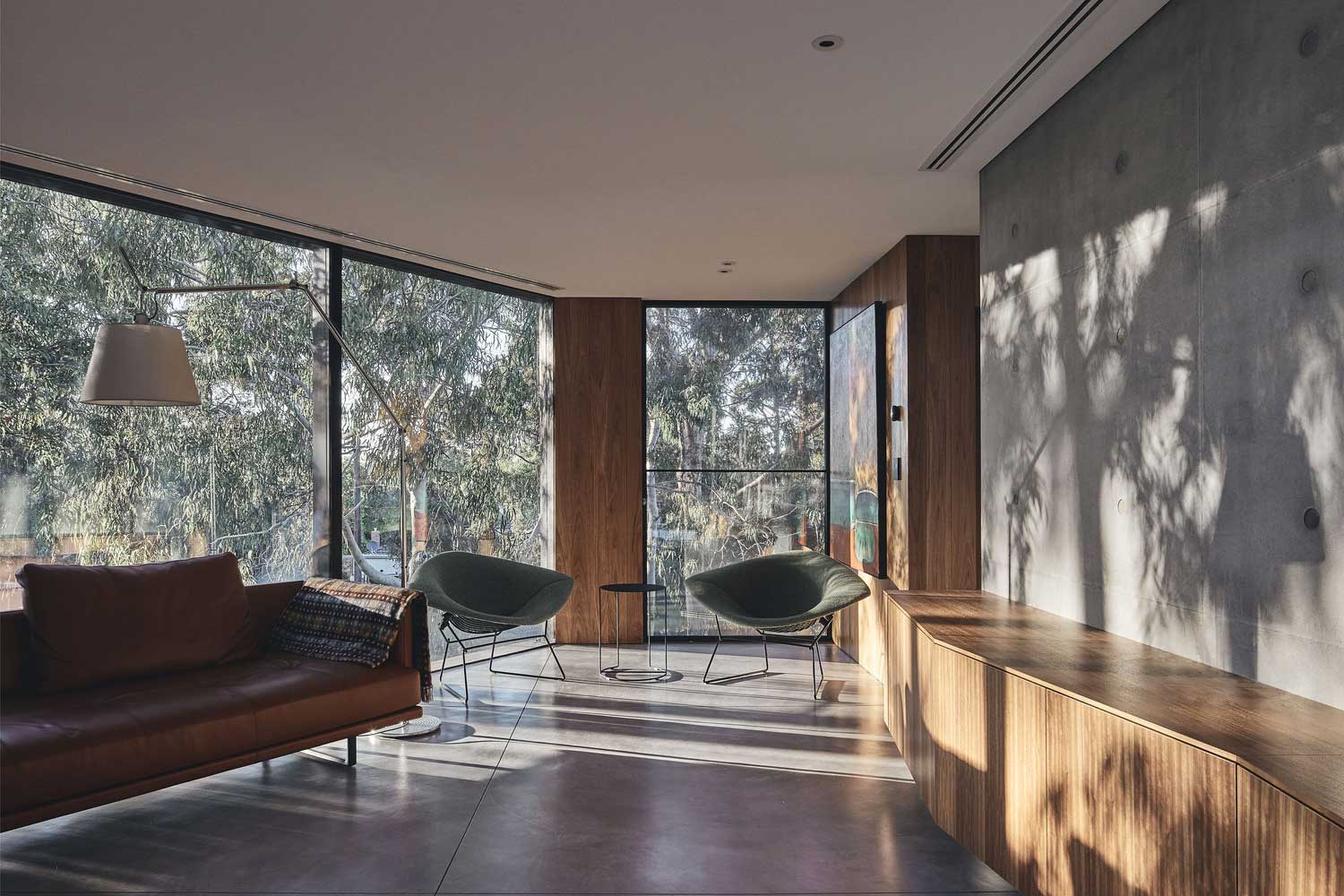Glass wall houses, also known as “glass box” or “glass cube” houses, are modern architectural designs that feature large expanses of glass as the primary building material. These houses often have a minimalistic aesthetic and a strong connection to the outdoors, creating a seamless transition between the interior and exterior spaces. Glass wall houses are becoming increasingly popular due to their ability to flood interiors with natural light, provide stunning views, and create a sense of openness and transparency. This article will explore the benefits, design considerations, and inspiration for glass wall house design.

The Benefits of Living in a Glass Wall House
Living in a glass-wall house offers several benefits. The most obvious is the ample natural light that floods the interior spaces, creating a bright and airy atmosphere. This not only enhances the visual appeal of the space, but also has a positive impact on mental and physical health. The large windows also provide stunning views and a strong connection to the outdoors, bringing nature inside and creating a sense of tranquility. Additionally, the transparency of the glass walls creates a sense of openness and spaciousness, making the interior feel larger than it is. The use of high-performance glass also provides energy efficiency benefits, helping to reduce heating and cooling costs.

Design Considerations for Glass Wall Houses
When designing a glass wall house, there are a number of considerations that need to be taken into account. One of the most important is the orientation of the house. The location of the glass walls should be carefully planned to make the most of natural light and views, while also providing privacy. The use of high-performance glass is also crucial for energy efficiency and to mitigate the solar heat gain.
Another important consideration is privacy, as glass walls can make it difficult to maintain privacy from both inside and outside the house. Solutions such as privacy screens, curtains, and smart glass can be used to address this issue.
Additionally, the use of different types of glass, such as frosted or etched glass, can be used to create different levels of transparency and privacy. The use of cantilevered or overhang design can also provide shade and protection from the sun.
The integration of natural elements, such as plants and water features, can also be used to create a sense of harmony between the interior and exterior spaces. The use of natural materials, such as wood and stone, can also be used to create a warm and inviting atmosphere.
Finally, attention should be paid to the overall aesthetic and style of the house. Glass wall houses can range from minimalistic and modern to more traditional and rustic, depending on the preferences of the homeowner.
Integrating Nature into Glass Wall House Design
Integrating nature into glass wall house design is a key aspect of creating a seamless transition between the interior and exterior spaces. This can be achieved through the use of large windows and sliding doors that blur the boundaries between inside and outside.
One way to integrate nature into the design is to use a lot of plants and greenery both inside and outside the house. Incorporating indoor gardens, green roofs, and vertical gardens can bring a sense of nature and freshness inside the house.
Another way to incorporate nature into the design is to use natural materials such as wood, stone, and water features. These materials can be used to create a warm and inviting atmosphere that is in harmony with the natural surroundings.
Additionally, the use of natural light and the incorporation of outdoor spaces, such as terraces and decks, can also be used to create a strong connection to nature. This can be achieved through the use of large windows and sliding doors, as well as the strategic positioning of the house on the lot to take advantage of views and natural light.
Overall, integrating nature into glass wall house design is about creating a connection between the interior and exterior spaces and bringing the beauty of nature inside.

The Use of High-Performance Glass for Glass Wall Houses
The use of high-performance glass is crucial for glass wall houses to ensure energy efficiency, comfort and durability. High-performance glass offers a number of benefits compared to traditional glass, such as improved insulation, solar control, and UV protection.
One of the most important benefits of high-performance glass is its ability to reduce solar heat gain, which can help keep the interior of the house cool and reduce energy costs. This is achieved through the use of coatings, such as low-e coatings, that reflect or absorb solar energy.
High-performance glass also provides improved insulation, which helps to keep the interior warm in the winter and cool in the summer. This can be achieved through the use of multiple panes of glass or by using specialized coatings that improve the insulation properties of the glass.
Additionally, high-performance glass can also provide UV protection, which helps to reduce fading of furniture and flooring, as well as providing a more comfortable living space.
Overall, the use of high-performance glass in glass wall houses can provide a number of benefits, including improved energy efficiency, comfort, and durability. This can help to create a more comfortable and sustainable living space.

The Challenges and Solutions for Privacy in Glass Wall Houses
Privacy is one of the most significant challenges faced by glass wall houses. Large expanses of glass can make it difficult to maintain privacy from both inside and outside the house. This can be a concern for homeowners who want to enjoy the benefits of natural light and views while also maintaining a sense of privacy.
There are several solutions that can be used to address the issue of privacy in glass wall houses. One of the most common is the use of privacy screens, curtains, or blinds. These can be used to block views from the outside while still allowing natural light to enter the interior spaces.
Another solution is the use of smart glass, also known as switchable glass, which can be controlled to change from transparent to opaque at the flick of a switch. This allows homeowners to easily control the level of privacy and natural light in their home.

Additionally, the use of different types of glass, such as frosted or etched glass, can be used to create different levels of transparency and privacy. The use of cantilevered or overhang design can also provide shade and protection from the sun.
Finally, the use of landscaping and vegetation can also be used to provide privacy and shade for the glass walls. This can be achieved through the use of trees, hedges, or other plants that can block views from the outside while still allowing natural light to enter the interior spaces.
Overall, there are a variety of solutions that can be used to address the issue of privacy in glass wall houses, from the use of privacy screens, curtains, and blinds to smart glass and landscaping. With the right approach, it is possible to create a comfortable and private living space while still enjoying the benefits of natural light and views.

Glass Wall House Case Studies and Inspiration
Glass wall houses have been popular among architects and designers for decades, and there are many case studies and examples of these designs. One of the most iconic glass wall houses is the Farnsworth House, designed by Mies van der Rohe in 1951. This minimalistic design features a steel frame and large expanses of glass, creating a seamless transition between the interior and exterior spaces.
Another notable example is the Glass House by Philip Johnson, built in 1949. This iconic design features a minimalist aesthetic and large windows that provide stunning views of the surrounding landscape.

In recent years, there have been many examples of contemporary glass wall houses that incorporate innovative design and technology. For example, the Glass Pavilion by Steve Hermann, is a stunning glass wall house that features a complex geometric design and a state-of-the-art glass structure that provides privacy and natural light.
There are also many examples of glass wall houses that incorporate sustainable design and technology. For example, the Solar Umbrella House by Lake|Flato Architects, is a glass wall house that incorporates solar panels, rainwater harvesting and other sustainable design elements.
Overall, glass wall houses offer a wide range of design possibilities, from minimalistic and modern to more traditional and rustic. These case studies and examples can provide inspiration for homeowners and architects looking to create their own glass wall houses.













